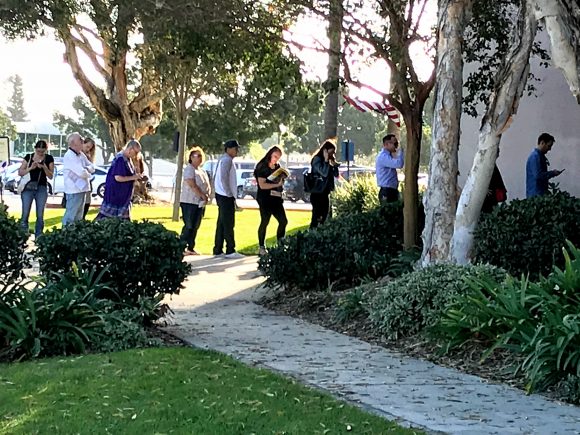Yimeng Li, Michelle Hyun, and I just posted a revised version of our paper, “Why Do Election Results Change After Election Day? The “Blue Shift” in California Elections”. In the paper, we focus our attention on data from Orange County, CA, part of our ongoing research on election integrity in California. Orange County is a very good case for research, as we have a wealth of amazing data from OC, we’ve learned a great deal about how elections are run in OC, and of course, because the Orange County Registrar of Voters, Neal Kelley, has been wonderful about working with our research group.
Research like this would not be possible without strong partnerships with election officials like Neal Kelley. They are also difficult without a strong research group, and in this case, I’ve enjoyed working on this project with Yimeng and Michelle. Yimeng Li is a graduate student at Caltech, who has worked on a number of election science research projects. Michelle is an undergraduate at Caltech, who started working with us on this project as part of her Summer Undergraduate Research Fellowship (SURF) in 2019. As I’ve said many times in many forums, one of the truly remarkable aspects of being a prof at Caltech is working with our exceptional students!
The abstract of our paper summarizes our work and results well:
The counting of votes in contemporary American elections is usually not completed on Election Night. There has been an increasing tendency for vote shares to shift toward Democratic candidates after Election Day in general elections. In this paper, we study this phenomenon using granular data from Orange County, California. Leveraging snapshots of precinct-level election returns and precinct-level demographic and political composition, we conduct the first full-fledged analysis of the potential drivers of vote share shifts. Utilizing snapshots of individual-level administrative records, we provide the first analysis of the characteristics of voters whose ballots were tallied later versus earlier. Far from being anomalous, the vote share shifts are consistent with underlying precinct voter compositions and the order of individual ballot processing. We find the same underlying drivers in North Carolina and Colorado and discuss the implications of the evolving election administration practices across states for public concerns about election integrity.
Of course, in the paper we also present data from other states to help document the general nature of post-election shifts in vote tabulations in the U.S. They are common, and should not be surprising, because election officials are not processing ballots in random order. Rather, they process ballots in batches as they enter into the tabulation and canvass process, which in a jurisdiction like Orange County means that large batches of by-mail ballots may be processed in groups, while ballots from drop boxes and vote centers are likely to get processed in other batches. Provisional and last-minute ballots then may get processed in their own batches as well. As different types of voters are likely to be casting each type of ballot (by-mail early or late, voting in person, drop box voters, and provisional voters), that implies that we ought to see post-election tabulation results shift from party-to-party, especially in very close elections.
We’ve got more research planned on this topic, and of course, we continue to do lots of research with all of the important data we have collected from Orange County.
